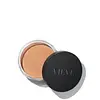What's inside
What's inside
 Key Ingredients
Key Ingredients

 Benefits
Benefits

 Concerns
Concerns

 Ingredients Side-by-side
Ingredients Side-by-side

Octyldodecanol
EmollientC15-19 Alkane
SolventBis-Diglyceryl Polyacyladipate-2
EmollientTribehenin
EmollientSilica
AbrasiveMica
Cosmetic ColorantSynthetic Wax
AbrasiveJojoba Esters
EmollientDisteardimonium Hectorite
StabilisingPersea Gratissima Oil
Skin ConditioningHelianthus Annuus Seed Oil
EmollientTocopherol
AntioxidantBeta-Sitosterol
Emulsion StabilisingSqualene
EmollientDecylene Glycol
Skin Conditioning1,2-Hexanediol
Skin ConditioningCaprylyl Glycol
EmollientParfum
MaskingCI 77891
Cosmetic ColorantIron Oxides
CI 42090
Cosmetic ColorantOctyldodecanol, C15-19 Alkane, Bis-Diglyceryl Polyacyladipate-2, Tribehenin, Silica, Mica, Synthetic Wax, Jojoba Esters, Disteardimonium Hectorite, Persea Gratissima Oil, Helianthus Annuus Seed Oil, Tocopherol, Beta-Sitosterol, Squalene, Decylene Glycol, 1,2-Hexanediol, Caprylyl Glycol, Parfum, CI 77891, Iron Oxides, CI 42090
Phenyl Trimethicone
Skin ConditioningSilica
AbrasiveAluminum Starch Octenylsuccinate
AbsorbentPolymethyl Methacrylate
Polyethylene
AbrasiveMicrocrystalline Wax
Emulsion StabilisingPhenoxyethanol
PreservativeDiethylhexyl Syringylidenemalonate
Skin ProtectingTocopheryl Acetate
AntioxidantCaprylyl Glycol
EmollientArgania Spinosa Kernel Oil
EmollientCaprylic/Capric Triglyceride
MaskingCI 77491
Cosmetic ColorantCI 77492
Cosmetic ColorantCI 77499
Cosmetic ColorantCI 77891
Cosmetic ColorantCI 42090
Cosmetic ColorantCI 17200
Cosmetic ColorantPhenyl Trimethicone, Silica, Aluminum Starch Octenylsuccinate, Polymethyl Methacrylate, Polyethylene, Microcrystalline Wax, Phenoxyethanol, Diethylhexyl Syringylidenemalonate, Tocopheryl Acetate, Caprylyl Glycol, Argania Spinosa Kernel Oil, Caprylic/Capric Triglyceride, CI 77491, CI 77492, CI 77499, CI 77891, CI 42090, CI 17200
Ingredients Explained
These ingredients are found in both products.
Ingredients higher up in an ingredient list are typically present in a larger amount.
Caprylyl Glycol is a humectant and emollient, meaning it attracts and preserves moisture.
It is a common ingredient in many products, especially those designed to hydrate skin. The primary benefits are retaining moisture, skin softening, and promoting a healthy skin barrier.
Though Caprylyl Glycol is an alcohol derived from fatty acids, it is not the kind that can dry out skin.
This ingredient is also used as a preservative to extend the life of products. It has slight antimicrobial properties.
Learn more about Caprylyl GlycolCi 42090 is a synthetic dye created from petroleum. It is used to give a bright blue color to cosmetics, medicine, and food.
Ci 77891 is a white pigment from Titanium dioxide. It is naturally found in minerals such as rutile and ilmenite.
It's main function is to add a white color to cosmetics. It can also be mixed with other colors to create different shades.
Ci 77891 is commonly found in sunscreens due to its ability to block UV rays.
Learn more about CI 77891Silica, also known as silicon dioxide, is a naturally occurring mineral. It is used as a fine, spherical, and porous powder in cosmetics.
Though it has exfoliant properties, the function of silica varies depending on the product.
The unique structure of silica enhances the spreadability and adds smoothness, making it a great texture enhancer.
It is also used as an active carrier, emulsifier, and mattifier due to its ability to absorb excess oil.
In some products, tiny microneedles called spicules are made from silica or hydrolyzed sponge. When you rub them in, they lightly polish away dead skin layers and enhance the penetration of active ingredients.
Learn more about Silica